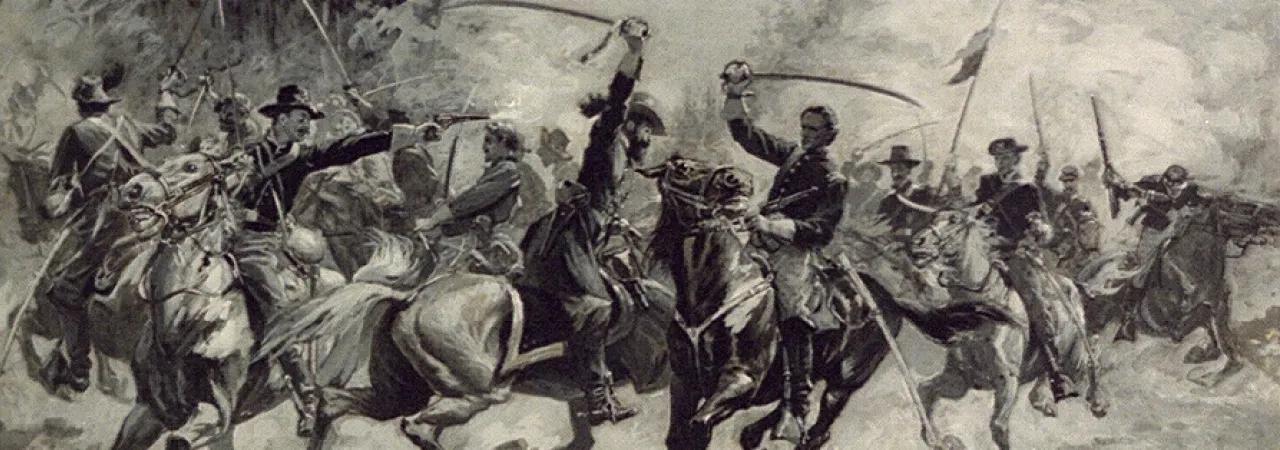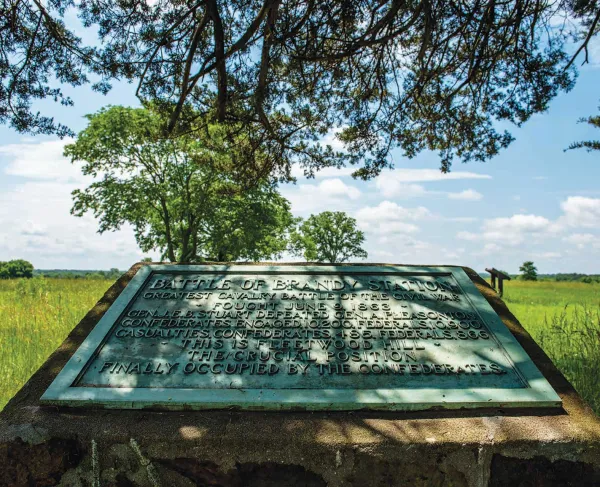In March 1833, with the onset of Westward Expansion, President Andrew Jackson authorized the formation of a regiment of United States Dragoons. Such mounted units, which could assume the dual role of cavalry and infantry, had served in the American Revolution and in the Nation’s early conflicts. The Dragoons soon proved to be an invaluable asset on the Great Plains and due to an ongoing war with the Seminoles, Congress authorized the creation of another regiment on May 23, 1836. This new unit was designated the 2nd U.S. Dragoons.
For the next several years, the Second navigated the Florida swamps in operations against their fierce enemy. In the fall of 1842, the regiment transferred to posts in Louisiana and Arkansas. Under the direction of Capt. William J. Hardee, a future Confederate general, the regiment refined its skills on the drill field in preparation for its next major assignment. It came in the spring of 1846.
As part of Gen. Zachary Taylor’s army, the regiment marched to Texas and crossed the Rio Grande River. On May 9 at Resaca de la Palma, Capt. Charles May’s squadron launched a mounted assault against an enemy artillery position. May’s charge forced the withdrawal of the guns and captured a Mexican general. The regiment eventually transferred to Gen. Winfield Scott’s army and fought in the Mexico City Campaign.
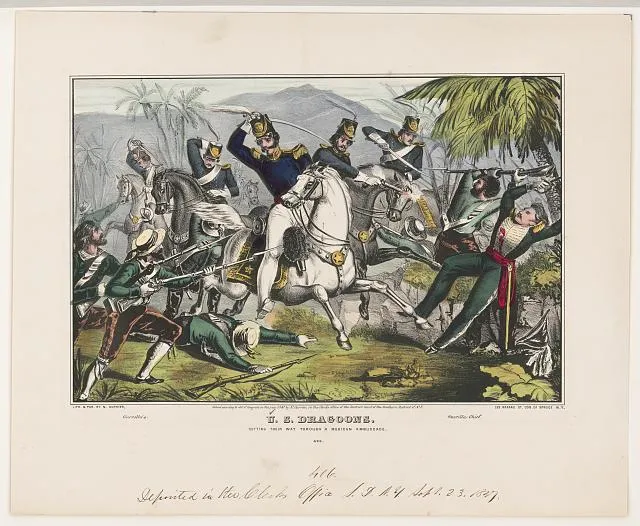
At the conclusion of the Mexican War, the Dragoons were assigned to posts in the Southwest, Texas and Kansas. The regiment participated in several expeditions against various American Indian tribes. In October, 1857, the unit was assigned to Col. Albert Sidney Johnston’s force that was sent to Utah to engage the Mormons. Johnston, who would soon become a Confederate army commander and fall at Shiloh, led a grueling but bloodless march to Salt Lake City.
At the outbreak of the Civil War, the bulk of the regiment transferred east. On August 3, 1861, the Dragoons were re-designated the 2nd United States Cavalry. Brigaded with other Regular cavalry regiments and at times volunteers, the regiment fought in the campaigns of the Army of the Potomac.
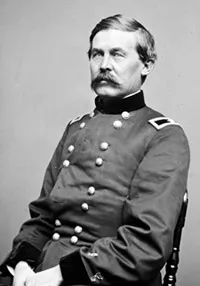
One of the Second’s hardest engagements came at Brandy Station on June 9, 1863. That morning, General Alfred Pleasonton, who as a lieutenant participated in May’s charge at Resaca de la Palma, directed his cavalry corps across the Rappahannock to engage Confederate cavalry under Maj. Gen. Jeb Stuart near Culpeper Court House. As part of General John Buford’s command and under the direction of Capt. Wesley Merritt, the 2nd U.S. splashed across Beverly Ford in the opening phase of the engagement. Like Pleasonton, Buford was also an old Second Dragoon and had served as the regiment’s quartermaster on the Mormon Expedition. Buford moved to high ground overlooking the ford on the farm of Richard Cunningham. For much of the morning and afternoon, Merritt and his troopers engaged General W.H.F. “Rooney” Lee’s brigade for control of a stonewall which separated Cunningham’s property and that of Dr. Daniel Green. When Lee was forced to withdraw due to Union threat in the Confederate rear, the regiment, along with the Reserve Brigade followed and engaged the enemy horsemen along Yew Ridge. During the action, Merritt personal engaged in a duel with Lee. After fourteen hours of fighting, Pleasonton elected to withdraw back across the Rappahannock. The American Battlefield Trust has preserved over 2,100 acres at Brandy Station.
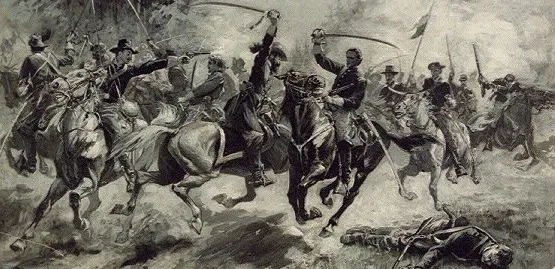
When the Civil War came to an end, the regiment was dispersed to different posts throughout the West. On December 21, 1866, 27 men from Company C perished in the “Fetterman Massacre” near Fort Phil Kearny in Wyoming Territory. In the spring of 1869, three companies were sent to Montana. They would remain there for the next fifteen years and become known as the “Montana Battalion”.
These troopers, along with other companies from the regiment fought in the Great Sioux War. Part of the Second accompanied Col. Joseph Reynolds’ Powder River Expedition in March, 1876, and were at the Rosebud. In the aftermath of the Little Bighorn disaster, the troopers assisted in evacuating the wounded of the 7th U.S. Cavalry from the battlefield. Lieutenant Charles Roe and Company C returned to the Little Bighorn in the summer of 1881. Roe and his men erected the monument which stands today on Last Stand Hill to the Seventh Cavalry and interred remains of the dead around its base. In May, 1877, the Second participated in the last battle of the conflict against the Miniconjou chief Lame Deer. Several months later, the 2nd U.S. fought against the Nez Perce at Camas Prairie and Bear Paw Mountain. In December 1885, one squadron was transferred to Arizona to engage Apaches led by Geronimo.
During the Spanish-American War, the Second was sent to Cuba and fought in the Santiago Campaign. In January, 1905, the regiment was dispatched to and fought in the Philippines. World War I marked the last time the regiment would use horses in combat. The regiment fought in the offensives of Aisne-Marne, Oisne-Aisne, at Saint Mihiel and the Meuse-Argonne.
At the end of the Great War, the regiment was posted to Fort Riley, Kansas. Five months after entrance into World War II, it was re-designated the Second Armored Regiment. The regiment served under George S. Patton in Europe, and fought again in Philippines. In 1948, the regiment was re-designated again as the 2nd Armored Cavalry Regiment. Rather than going to Korea, the unit remained in Europe throughout the Cold War. The regiment fought in Operation Desert Storm and Operations Enduring and Iraqi Freedom. Although divided and combined to form other units throughout its history, the descendants of the Second Dragoons exist today as the 2nd Stryker Cavalry Regiment. The words “Toujours Prêt”, Always Ready, are emblazoned on their coat of arms and those who serve faithfully adhere to Charles May’s orders to his men at Resaca de la Palma “Remember your regiment and follow your officers.”
We're on the verge of a moment that will define the future of battlefield preservation. With your help, we can save over 1,000 acres of critical Civil...
Related Battles
866
433
